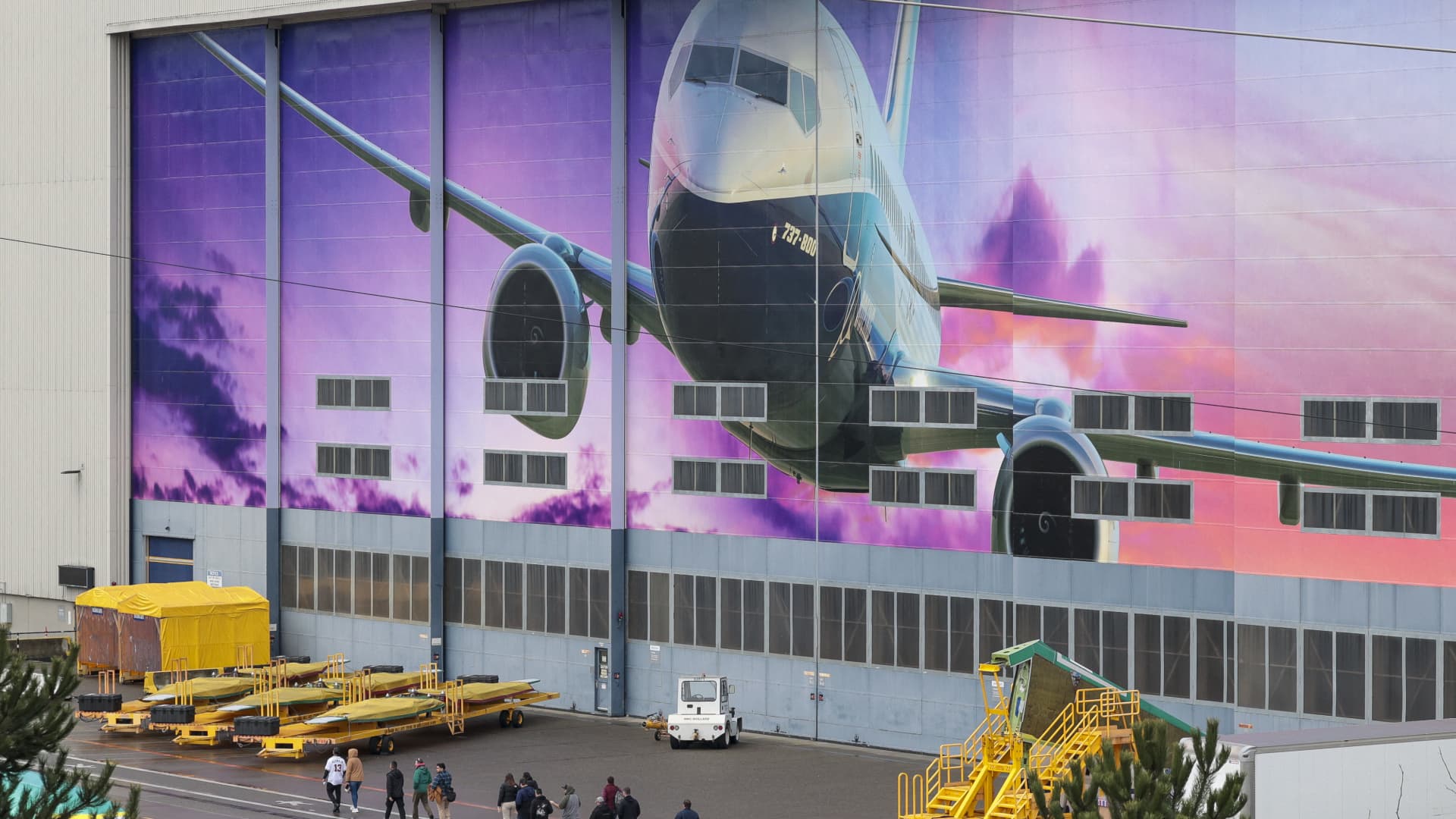A grounded Boeing 737 Max 9 aircraft at Los Angeles International Airport.
Eric Thayer | Bloomberg | Getty Images
Boeing narrowed its losses at the end of last year, but its CEO said now is “not the time” for financial targets as the manufacturer grapples with the fallout from a fuselage panel that blew out midflight on one of its new 737 Max 9s earlier this month.
Here’s how Boeing performed compared to what analysts polled by LSEG, formerly known as Refinitiv, expected for the last three months of 2023:
- Adjusted loss per share: 47 cents vs. 78 cents expected
- Revenue: $22.02 billion vs. $21.1 billion expected
Boeing posted a net loss of $30 million, or 4 cents a share in fourth quarter, down from a $663 million loss, or $1.06 a share a year earlier. Adjusting for one-time items, Boeing reported a net loss of 47 cents per share.
Its free cash flow of $2.95 billion in the quarter topped analysts’ expectations. Revenue grew 10% year over year to $22.02 billion.
Boeing CEO Dave Calhoun, who took the helm of the aircraft giant four years ago in the wake of two deadly crashes of the Max, is again under pressure to clean up the company’s reputation with airline customers, regulators and the public after the accident, after the Jan. 5 accident in which a panel blew out on Alaska Airlines Flight 1282 as the plane climbed out of Portland, Oregon, leaving a gaping hole in the side of the plane.
“While we often use this time of year to share or update our financial and operational objectives, now is not the time for that,” Calhoun said in a message to employees. “We will simply focus on every next airplane while doing everything possible to support our customers, follow the lead of our regulator and ensure the highest standard of safety and quality in all that we do. Ultimately – that is what will drive our performance.”
Federal investigators are examining whether the door plug was improperly installed before the Max 9 plane was handed off to Alaska late last year.
The accident was the most serious in a series of apparent production flaws, which have slowed down deliveries of new planes, and angered some of the company’s biggest airline customers in the process, while main rival Airbus continues to surpass Boeing in handing over new aircraft.
The Federal Aviation Administration last week cleared the Max 9 to fly again but said it would halt Boeing’s planned ramp up in production, which the manufacturer had aimed to get up to about 50 Max planes a month in 2025 or 2026. Boeing confirmed on Wednesday that it is building 38 Maxes a month.
The Boeing 737 Max is the company’s best-selling plane. A delay to production increases could hamper Boeing’s financial targets and affect suppliers that have been preparing for higher output, as well as customers counting on new planes to cater to post-Covid travel demand.
“Our people on the factory floor know what we must do to improve better than anyone. We should all seek their feedback, understand how to help and always encourage any team member who raises issues that need to be addressed,” he said. “We will go slow, we will not rush the system and we will take our time to do it right.”
Calhoun has visited company and supplier production lines as well as lawmakers on Capitol Hill in the weeks since the incident, vowing transparency and to fix any shortfalls in its manufacturing. The company had the first of several production stand-downs last week to discuss with workers manufacturing problems and other potential improvements to Boeing’s processes.
Boeing executives are also going to face questions about how the accident and added scrutiny from the FAA could affect the certification timeline for the Max 7 and Max 10, the smallest, and largest models of the company’s best-selling planes.
On Monday, after pressure from lawmakers, Boeing said it won’t seek a safety exemption for the Max 7 related to a de-icing system, but instead will work on an engineering solution.

